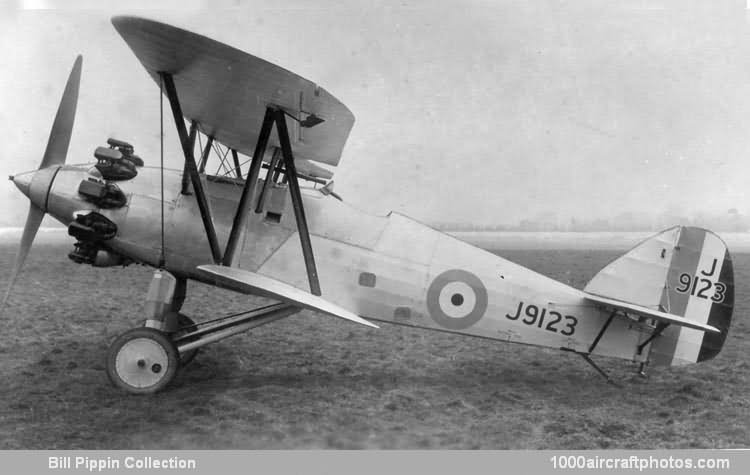Again employing the recently introduced Hawker system of metal construction which bestowed such strength and lightness, the F.20/27 design was tendered to the Air Ministry in November 1927. A prototype, serial J9123, was ordered under Contract No. 813870/27 and first flown at Brooklands by P.W.S. Bulman in August 1928. Powered initially by a 450 hp Bristol Jupiter VII nine-cylinder radial engine driving a two-blade Watts wooden propeller, the aircraft followed the current pattern of biplane interceptors, featuring sharply staggered single-bay wings, two synchronized fixed forward-firing Vickers guns with 600 rounds per gun, and 29.53x4.92 in (750x125 mm) Palmer wheels (later fitted with Palmer wheel brakes).
The aircraft was delivered to Martlesham Heath towards the end of 1928 and underwent a number of performance trials during which, using a Fairey Reed metal propeller, a maximum speed of 190 mph (306 kmh) was recorded. In May 1930, J9123 was returned to the factory at Kingston upon Thames, Surrey, for installation of the 520 hp Bristol Mercury VI prototype engine and, though by now interest was centered upon the Fury, a short performance assessment at Martlesham confirmed a top speed of 202 mph at 10,000 ft (325 kmh at 3,048 m).
This was a most creditable performance for an aircraft fitted with an uncowled radial and although designs were prepared for inclusion of a Townend Ring the aircraft met with a minor accident and the engine was returned to Filton for further flight testing in other machines."
